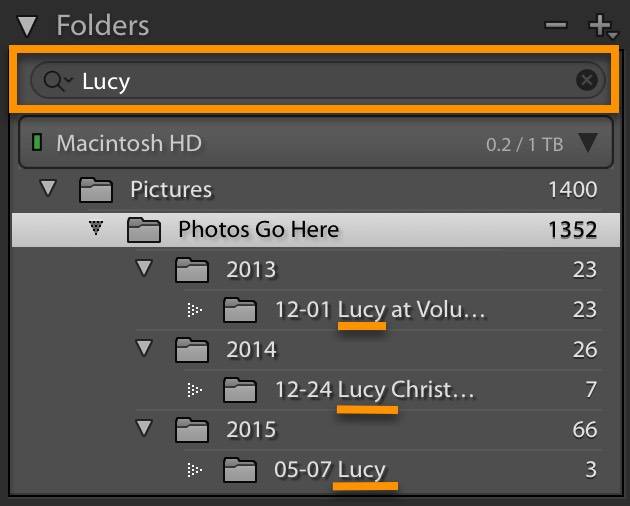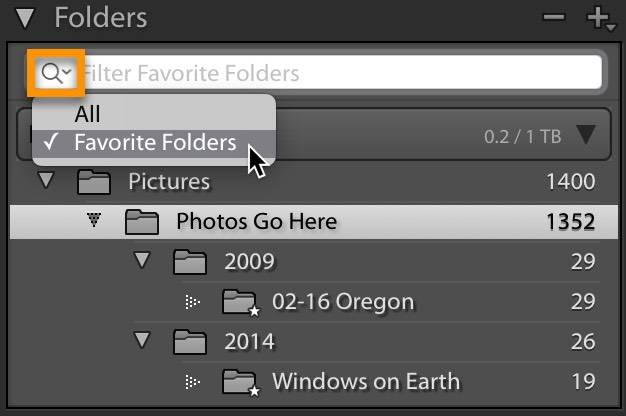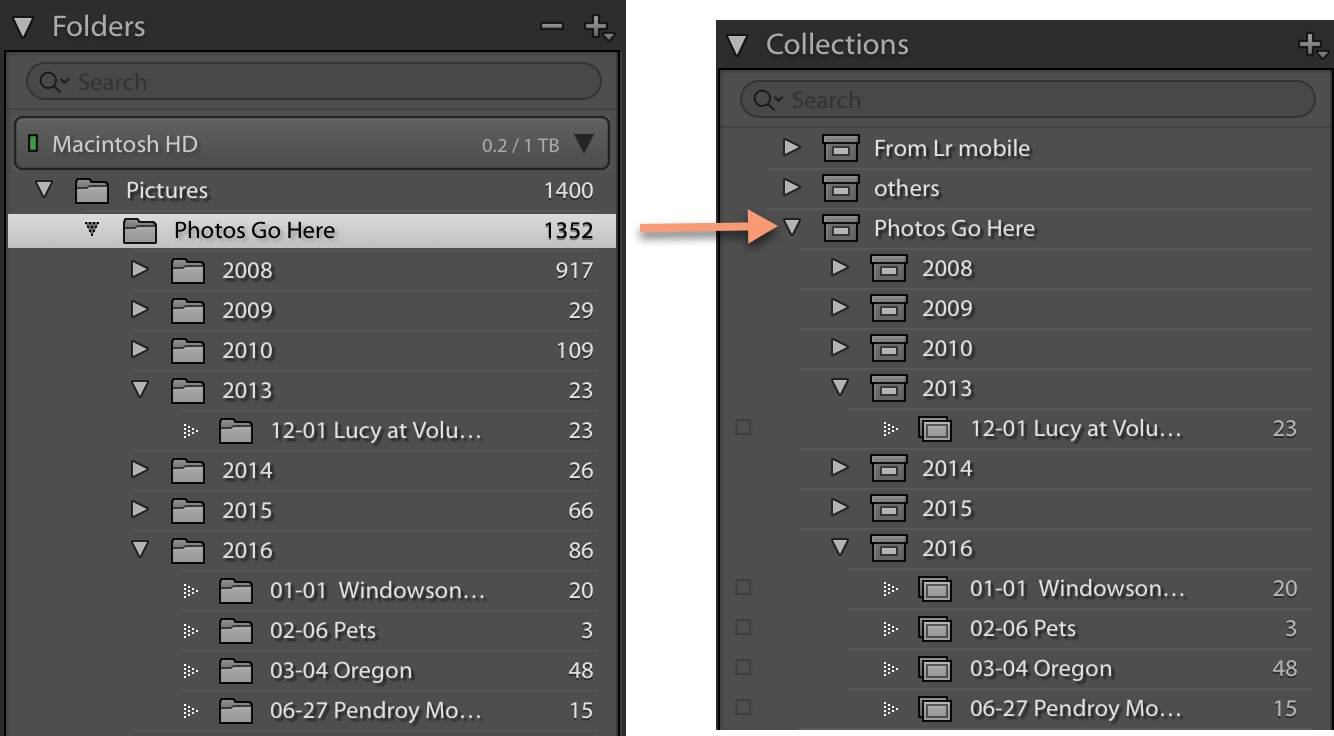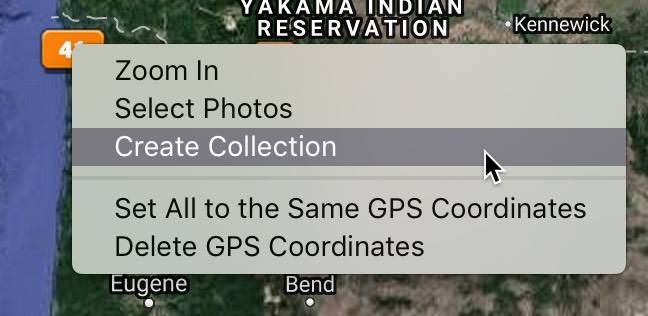 After releasing the last update only two months ago, Adobe today released Lightroom Classic version 7.2 with performance improvements, small but very useful new features, support for new cameras, new lens profiles and bug fixes.
After releasing the last update only two months ago, Adobe today released Lightroom Classic version 7.2 with performance improvements, small but very useful new features, support for new cameras, new lens profiles and bug fixes.
If you are a Lightroom Classic subscriber, to update to Lightroom Classic 7.2, go to Help>Updates, and in the Creative Cloud application, click on Update next to “Lightroom Classic CC” (not Lightroom CC or Lightroom CC 2015). If the update is not listed in the CC app, click on the three dots in the top right and choose Check for App Updates. If it’s still not there and it’s the day of release, then try later. Otherwise try signing out and signing in again.
It’s never a bad idea to back up your Lightroom catalog before updating. If the Backup prompt doesn’t come up when you close Lightroom, then in the menu bar in the top left of Lightroom go to Lightroom (Mac) or Edit (PC) > Preferences, and on the General tab, change the Backup frequency dropdown to “When Lightroom Next Exits”. Then close Lightroom and backup your catalog. (The backup frequency will then revert to the selection you had previously.)
Note that there is no update to, and there will not be any more updates to, the non-subscription Lightroom 6 application – the last update was Lightroom 6.14, released in December, 2017.
Performance Improvements
Tom Hogarty of Adobe promised late last year that improving Lightroom Classic performance would be a top priority, and he and the Lightroom team have continued to deliver on that promise with this update. Note though that the team isn’t done – there will be more performance improvements in future releases. Improvements in this update focus on batch processes – exports, imports, merges, etc., as opposed to interactive response as you perform tasks.
Though everyone may see some improvement, performance improvements in 7.2 will be most evident on machines with 12+ GB of RAM (memory). According to Priya Alexander of Adobe, “In this … Lightroom Classic 7.2 release, we were able to make significant strides with our partners at Intel on addressing key performance issues. We have optimized CPU and memory usage so that performance will scale better across multiple cores on computers with at least 12 GB of RAM.”
Performance Improvements:
- The issue of Lightroom slowing down over time has been fixed for most use-cases. If Lightroom still slows down over time for you, help Adobe resolve this by reporting your experience on this Adobe page. (Note that you may still see adjustment brush lags, especially if you use noise reduction and/or sharpening, as these are very resource-intensive.)
- Faster exports
- Faster loading of thumbnails in the Import dialog
- Faster imports and auto-imports
- Faster preview and smart preview generation
- Faster moving from image to image in Loupe view
- Faster rendering of Develop adjustments
- Faster HDR and Panorama merges
Generally speaking, the more RAM and the more cores you have, the more improvement you should see. That said, how much improvement you experience will be dependent on your entire system configuration.
NOTE: While 4 GB of RAM remains the absolute minimum for Lightroom Classic, the recommended minimum is now 12 GB. If you’re not happy with Lightroom’s performance and you have less, do look into adding more.
Here are some early performance test results from Puget Systems, DP Review, and from F-Stoppers.
Are you seeing performance gains with this release? Let us know in the Comments section below.Folders Filter
In a very welcome addition to the Folders panel, now easily find folders with the new Folders filter!

Note that the full hierarchy of folders is displayed for a found folder – both parent folders and subfolders of the found folder.
The filter will search across all hard drives that you have in the Folders panel – but any that you had collapsed will remain collapsed, so be sure to expand them to see any folders found.
Now also filter on favorite folders – click on the magnifier icon to get the dropdown with All and Favorite Folders:

To mark a folder as a favorite, right-click on it and choose Mark as Favorite. Favorite folders now have a little star on the folder icon.
Known issues:
- When the Folder Filter box is cleared, enumeration of folders is slow. If the program is closed during this period, this process may continue in the background and prevent the user reopening Lightroom immediately.
- When turning off the filter or returning from Favorites to All, the order of hard drives in the Folders panel may change. Restarting Lightroom will resolve this.
Create Collections and Collection Sets from Folders
With this convenient new feature we can automatically create collections from individual folders, and collections sets and collections from folder hierarchies. This is particularly useful if you use Lightroom mobile or web, since only collections can be synced, not folders. It’s also useful if you’re transitioning to the new cloud-based Lightroom CC, as you can migrate your collections and collections sets, but not your folders.
To create a collection from a folder, right-click on the folder and choose Create Collection...
To replicate all or part of your folder hierarchy as collection sets and collections, right-click on the highest level folder that you want to include, and choose Create Collection Set. In the Folders panel in the screenshot below left, I right-clicked on Photos Go Here and chose Create Collection Set. This gave me a hierarchy of collection sets for Photos Go Here and years within it, and collections for each of my date/shoot folders.

Edited/Unedited Filter
Filter on whether photos have edits or not using the Library Filter bar or smart collections. In the Library Filter bar, Edited/Unedited appears in both the Attribute section and the Metadata section.
In the Attribute section, the first button is Edited and the second is Unedited. Note that if you click on Edited, clicking then on Unedited doesn’t turn the Edited criterion off! Instead both are turned on and you have photos that are edited and photos that are not edited. To turn the Edited filter off, click on it a second time. This holds also for Unedited.

Metadata section:

Known issues:
- I am finding this to be buggy at this point: photos with no edits (as evidenced by no edit badges) sometimes show in the Attribute filter as Edited if there is a “From Lr Mobile” Develop history state. For these photos, Metadata Edit filter count shows Unedited, but grid shows Edited.
You can also filter in smart collections for whether photos have edits – use the Has Edits field for images that have adjustments and/or have been cropped, or Has Adjustments for just adjustments.
Create Collection from Map Pin
Right-click on a Map pin in the Map module to create a collection with all photos from that location:

New Camera Support
Raw files from the following new cameras can now be imported:
- Fujifilm X-A5
- Fujifilm X-A20
- Panasonic LUMIX DC-GF10 (DC-GF90)
- Panasonic LUMIX DC-GH5s
Click here to see a list of all cameras supported in each version of Lightroom (and Camera Raw).
New Lens Profiles
Bugs Fixed
Here are the customer-reported bugs that were fixed:
- Info overlay disappears when moving between modules
- Watermark omitted from embedded thumbnails of exported JPEGs
Other bugs have been fixed that Adobe discovered internally or that its partners reported – so even though a bug that was affecting you isn’t listed here as fixed, it’s possible that it was.
If you are experiencing bugs, please report them to Adobe on this webpage.


Hello Laura
Lightroom Classic CC is prohibited in Mauritius. I still can’t figure out why.
So, I will most probably turn to another editing tool.
Best regards
Tiberman, Mauritius
That’s terrible news, Tiberman! What have you heard? (I will look into it.)
Thank you Laura,
You are wonderful to let us know every time there are new upgrades and you spend a lot of time to explain us what’s new and if issues still exist. Thank you so much for your help!!! We do appreciate your help.
You’re welcome – and thank you for your note, Jean-Pierre!
Hi Laura, Great work as usual. I updated today but still no lens profile for the new Sigma 24-70 f2.8 Art lens although it is hardly new at this stage having been released last September I think. Do you know anything about this as Adobe’s “Tech support”/chatbots simply say it will come in a future update. I would think such a flagship lens from a manufacturer like Sigma would be popular enough to warrant a profile before now. There is a listing for a 24-70mm 2.8 DG OS HSM with the letters A017 appended but it is only a Canon profile. I’m not sure, is this the same lens?
Thank you, Darren. Check the full list of lenses here. If it’s not there or you can’t access it, I’d suggest posting on Adobe’s site here. Alternatively you could build a profile yourself.
No improvement…. Quick develop by example does take ages. Pffff
iMac17,1
Processor Name: Intel Core i7
Processor Speed: 4 GHz
Number of Processors: 1
Total Number of Cores: 4
L2 Cache (per Core): 256 KB
L3 Cache: 8 MB
Memory: 32 GB
Bummer, Bart. I’d suggest posting your experience on Adobe’s site here.
I finally took the plunge and moved from Lightroom 6 to Classic this morning. I followed your excellent video to help me with the update and it worked beautifully. Thanks Laura
Hooray – I’m happy it went well, Roger!
Looks like my 32Gb and multi cores are finally earning their keep, (iMac 27)… Grid views snap into view now. A three photo HDR merge using Sony A7r3 raw files went noticeably faster… never kept notes on actual previous times, but they could be awfully slow. Not now.
Adjustment brush and develop changes are MUCH faster. Essentially no lag now. Hide /show mask is instant. Very nice work by the LR team!
That’s great to hear, Paul!! Thank you for sharing your experience.
Attempted to down load LR but it crashed on the four attempts I made. Downloaded PS but that crashed when I attempted to go into Camera Raw from PS. Result – I’m left with unworkable two important tools. Any commments appreciated?
I’m sorry, Peter, but I don’t have expertise on resolving installation issues. I’d suggest posting in Adobe’s Lightroom forum or on lightroomforums.net, or calling Adobe Customer Service.
Thanks.
Peter (Banyard).
Yesterday I downloaded the LR update and since then it’s acting up. I can’t switch between photos in the film strip at the bottom. Runs SLOW. I also can’t send photos between LR and PS.
I have uninstalled both LR and PH and re-installed both to no avail. Next step is to reinstall Sierra. Stay tuned.
I’m on a MAC with the latest Sierra version 10.13.3 (17D47)
Going to call Adobe today.
Calling Adobe would be my recommendation, Jay – I hope they get it sorted out.
Thanks Laura. I just re-installed Sierra and it seemed to fix the problem. I’m going to watch closely for the next few days. If the problem starts up again, I’ll be on the phone to Adobe.
Thanks for keeping us all updated with information from LR. I’m getting a lot out of the program, and enjoy learning more and more about it.
You’re welcome, Bret!
Thanks as always for such a clear and comprehensive rundown of the new/improved features, Laura – Adobe are useless at doing this, so I’m totally reliant on your blog for finding out what’s really changed in each release! :)
Hey Laura, Great work not surprisingly. I refreshed today yet at the same time no focal point profile for the new Sigma 24-70 f2.8 Art focal point despite the fact that it is not really new at this stage having been discharged last September I think. Do you know anything about this as Adobe’s “Technical support”/chatbots just say it will arrive in a future refresh. I would think such a leader focal point from a maker like Sigma would be sufficiently prominent to warrant a profile before now. There is a posting for a 24-70mm 2.8 DG OS HSM with the letters A017 annexed yet it is just a Canon profile. I don’t know, is this a similar focal point
I don’t know anything about it, Creastan. I’d suggest posting on Adobe’s site here.
Hi Laura, I’m sure someone will take exception but per the improvements being seen only on machines with 12GB RAM; very few truly portable (not talking about desktop replacement laptops 15″ or over) have available 12GB RAM models. This includes top of li e machines like Dell’s 13″ and 12″ 2-in-1s or Microsoft’s Surface Pros. Although I do see MS has very recently released 2 new Pros with 512GB and 1TB SSDs tgat have 16GB RAM whuch previously did not exist. Typically the norm for laptops below 15″ only have 8GB RAM.
Hi GeGi, the issue was that performance in LR wasn’t scaling up on higher RAM and higher core machines as it should have – these machines weren’t seeing the performance gains over lower RAM and lower core machines that they should have. It’s not that Adobe is ignoring the lower end machines. That said, LR is a complex program and runs much better with more RAM and cores. The minimum RAM recommended is now 12 GB. If I were buying a new computer, I personally wouldn’t look at anything with less than 16 GB.
Performance of 7.1 and still 7.2 is abysmally slow, i.e. a major retrogression compared with LR6, and certainly not an improvement in speed by any measure, at least in the Develop module. It frequently freezes when using the Tone sliders, particularly when setting the black point, with the spinning basket ball visible for at least several seconds. I have also noted other intermittent issues which I did not take note of at the time. I am using a 2013 MacBook Pro with 16GB RAM running High Sierra OS.
Hi Ray, thanks for providing this feedback. Try turning off GPU acceleration in Preferences>Performance – Use Graphics Processor. If that doesn’t fix it, then I would strongly suggest posting on Adobe’s site here so that they can either help you with it or add it to their issues to fix.
Laura-
Finally screwed up enough courage to attempt to upgrade from LR CC 2015.6 to LR Classic CC. Downloaded your video tutorials on LR Classic upgrade and viewed them all twice. Took notes and then followed your instructions: worked like a charm! I am now the proud operator of LR Classic 7.2 CC. I cannot thank you enough for your clear, concise tutorials that allow newbies like me to understand what’s going on.
A couple of questions: 1.) I want to change the file path of my LR files. RIght now, after upgrading to Classic, my LR file path is : P:\PICTURES_LR CC 2015_Originals\LR Classic Catalog\Will Rudds LR Classic Catalog.lrcat. I want ot adopt a filename path structure that clearly delineates these are Lightroom files, but minimizes the need to change the file path with future major Lightroom upgrades. I thought that P:\PICTURES_Originals\Lightroom Files\Will Rudds Classic Catalog.lrcat might work. Underneath the PICTURES_Originals folder would be three folders: LR Classic Catalog; Photos Go Here; and, Videos Go Here. What do you suggest? AND, HOW DO I MAKE THESE CHANGES? WHEN TRY IN FILE EXPLORER(WINDOWS 10 PRO) I GET A WARNING, THE FILE IS BEING USED IN ANOTHER APPLICATION.
2) I notice that you called LR Classic, LR Classic 7. In other places I see reference to LR Classic CC. What’s the proper term?
3.) I am in the earliest Creative Cloud subscription that gives me all Adobe Apps for $29.99/month. When running LR CC 2015 and now LR Classic 7/CC, what versions of Photoshop, Bridge, etc do I install and use? There is Photoshop CC 2015 and Photoshop CC 2017 (Just looked at CC and it shows PS 2015 and PS CC; no PS 2017). Bridge shows Bridge CC and Bridge 2017. WHICH DO I INSTALL AND USE??? WILL SOME VERSIONS CONFLICT WITH LR CLASSIC?
Your blogs, tutorials and web posts make Lightroom less intimidating and give us, the inexperienced, the courage to jump in and enjoy using an extremely powerful digital photography tool. My knowledge of digital photography has grown leaps and bounds-e.g. meta data, color space, keywords, raw, JPEG, TIFF, Plug-ins, white balance, exposure, since i first met you online and subscribed to your digital DVDs. Thank you, Thank you, Thank you. You simplify it and make it fun for me.
Hi Will, are you on Facebook? I have a private Facebook group for purchasers of my recent video series where you can ask questions and participate in discussions. If so, contact us for an invitation. Once you join, please post these questions separately.
I’m afraid that it’s too much to answer here on an unrelated blog post, though I do appreciate that you are a longtime follower. Re Classic, correct is “Lightroom Classic CC version 7, but it’s the only version of Classic so far, so often the 7 is left off, as is the CC. You’ll find a video in my Fundamentals & Beyond series on moving your photo library that explains how to move the catalog.
Thanks, Laura-
I’ll sign up for the Facebook group. Keep up the great work.